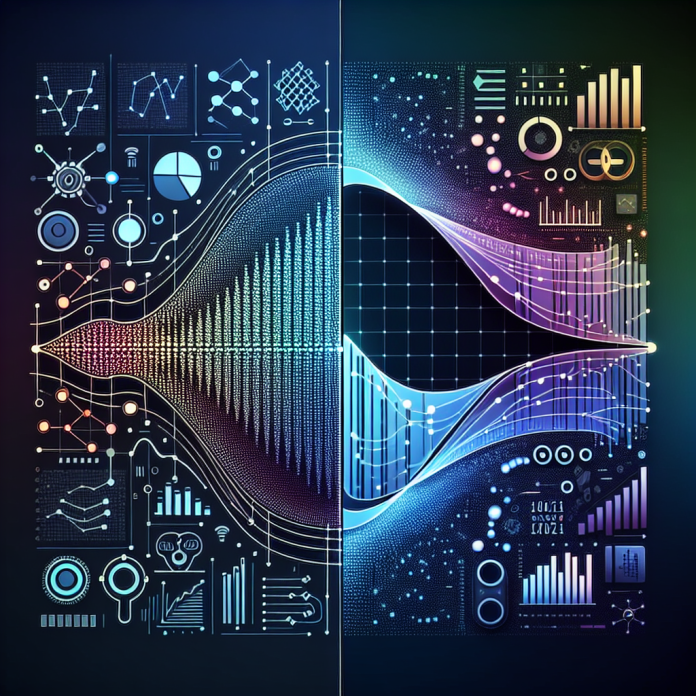Regression vs. Classification in AI: Choosing the Right Tool for the Job
Artificial Intelligence (AI) has revolutionized the way we interact with technology, from voice-controlled virtual assistants to predictive algorithms powering personalized recommendations. At the heart of AI’s capabilities are machine learning models, which enable systems to learn from data and make decisions without explicit programming.
Two fundamental types of machine learning tasks are regression and classification. While both involve predicting outcomes based on input data, they serve distinct purposes and require different approaches. In this article, we’ll delve into the differences between regression and classification in AI, explore real-world examples, and discuss how to choose the right tool for the job.
### Understanding Regression
Regression is a type of supervised learning task in which the goal is to predict a continuous numeric value. In other words, regression models estimate the relationship between input variables and a continuous output variable. This could involve predicting prices, temperatures, or stock prices based on historical data.
For instance, let’s consider a real estate agent trying to predict the selling price of a house based on its features such as square footage, number of bedrooms, and location. By training a regression model on historical sales data, the agent can accurately estimate the price of a new property coming on the market.
### Real-World Example: Predicting Housing Prices with Regression
Imagine you are developing a machine learning model to predict housing prices in a particular city. You collect data on various features of houses, such as size, number of bedrooms, and location. By feeding this data into a regression algorithm like linear regression or decision trees, the model can learn patterns and relationships to predict the selling price of a house.
### Understanding Classification
On the other hand, classification is another supervised learning task where the goal is to assign input data to a specific category or class. In other words, classification models make predictions about discrete outcomes, such as whether an email is spam or not, whether a tumor is malignant or benign, or whether a customer will churn or not.
For example, think of a medical diagnosis system that categorizes X-ray images as either showing signs of pneumonia or not. By training a classification model on labeled X-ray images, healthcare professionals can quickly identify patients who require further evaluation.
### Real-World Example: Sentiment Analysis with Classification
Suppose you work for a social media platform and want to analyze user comments to understand sentiment towards a particular product. By using a classification algorithm like Support Vector Machines or Neural Networks, you can classify user comments as positive, negative, or neutral. This information can help companies gauge customer satisfaction and improve their products or services.
### Key Differences between Regression and Classification
#### Nature of Output
One key difference between regression and classification lies in the nature of the output. While regression predicts continuous values, classification predicts discrete categories or classes. This distinction is crucial in determining the type of problem you are trying to solve and the appropriate algorithm to use.
#### Evaluation Metrics
Another important difference is the evaluation metrics used to assess model performance. Regression models are typically evaluated using metrics like mean squared error or R-squared, which measure the accuracy of continuous predictions. On the other hand, classification models are evaluated using metrics like accuracy, precision, recall, and F1 score, which measure the model’s ability to correctly classify instances into different classes.
#### Algorithms
Regression and classification tasks require distinct algorithms tailored to their specific objectives. In regression, common algorithms include linear regression, polynomial regression, decision trees, and random forests. In contrast, classification algorithms encompass logistic regression, Support Vector Machines, k-Nearest Neighbors, and neural networks, among others.
### Choosing the Right Tool for the Job
When selecting between regression and classification for a machine learning task, it’s essential to consider the nature of the problem, the type of data available, and the desired outcome. Here are some factors to consider when choosing the right tool for the job:
#### 1. Nature of the Output
If the goal is to predict a continuous value, such as sales revenue or temperature, regression is the appropriate choice. On the other hand, if the goal is to classify data into distinct categories, such as spam or not spam, classification is the way to go.
#### 2. Type of Data
Consider the type of data available for analysis. If the input features and output variable are continuous, regression is suitable. If the output variable consists of discrete categories, classification is more appropriate.
#### 3. Desired Outcome
Think about the end goal of the machine learning task. If the objective is to make numerical predictions, regression is the preferred approach. If the goal is to assign instances to specific classes, classification is the right tool for the job.
### Conclusion
In conclusion, regression and classification are two fundamental types of machine learning tasks with distinct purposes and methodologies. While regression predicts continuous values, classification assigns data to discrete categories. By understanding the differences between these two approaches and selecting the right tool for the job, AI practitioners can build accurate and efficient models for a wide range of applications.
Whether you are predicting housing prices, analyzing sentiment, or diagnosing medical conditions, choosing between regression and classification is a critical decision that can impact the success of your machine learning project. By considering the nature of the problem, the type of data available, and the desired outcome, you can leverage the power of regression and classification to unlock insights and drive intelligent decision-making in AI applications.

